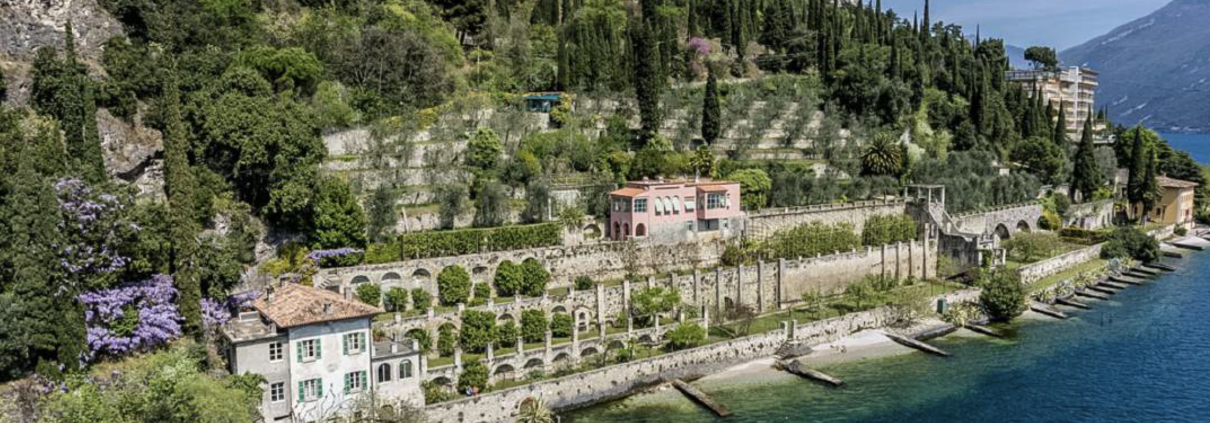Project Limonaia San Sebastiano: Press release
The European Heritage Project acquires important historical limonaia on Lake Garda
The acquisition of one of the oldest limonaie on Lake Garda is to not only prevent its looming decay, but to revive a historically unique form of cultivation with a high regional identifying character. In-house production of the famous limoncello is also being examined.
Northeast of Limone sul Garda, directly on the lake, lies one of the world’s oldest limonaie, San Sebastiano. The complex dates back to the 13th century and represents an agricultural peculiarity to the Lake Garda region. Although the northern Garda Lake is already enclosed by the foothills of the Alps, Mediterranean lemons have been grown here for centuries. The reason why they grow in this region is attributed to the monks from the nearby Franciscan monastery in Gargnano. They first brought the southern fruit from Genoa to Lake Garda in the 13th century. In Limone, the warmest region of the lake, they found a special microclimate that enabled economic cultivation throughout the year. The technically complex, stone planting walls facing directly south collected the solar energy during the day and emitted it again during the colder time of the day.
Exemplary reconstruction of the characteristic form of agriculture
The historical utilisation of San Sebastiano as a limonaia had been abandoned at for decades. The facility acquired by The European Heritage Project stood empty for years and destined for ruin, a fate it shares with numerous other limonaie. At the beginning of the 20th century, new means of transport made it cheaper to import lemons, and lemon flavours and vinegars were also more frequently produced artificially. This form of agriculture, specific to the region, increasingly lost its importance, and almost all limonaie disappeared.
The European Heritage Project aims to save the entire site as an agricultural production unit. The limonaia, which significantly shaped the character of an entire region, is to be rebuilt in its traditional form as an example for the entire region in the attempt to revive a unique form of cultivation and to transfer it to the present day.
In subsequent individual projects, The European Heritage Project wishes to revitalise the existing groves and resume lemon cultivation. To increase the cultivation area and yield, the purchase of further agricultural land is planned. In particular, the production of the traditional regional beverage, Limoncello, from the fruits of the company’s own lemons is planned.
Initially, however, the focus is on urgent maintenance measures to prevent deterioration and loss of the historical substance before a status report, including a historical assessment, can be generated.
The limonaia is the fourth Italian as well as the fourth agricultural project of The European Heritage Project.



